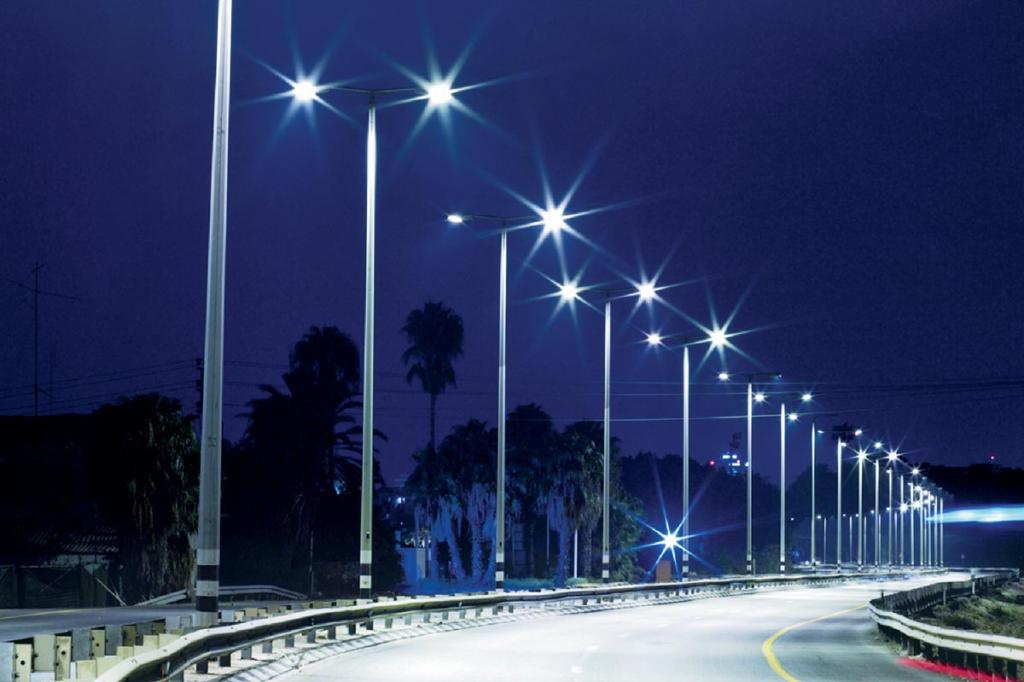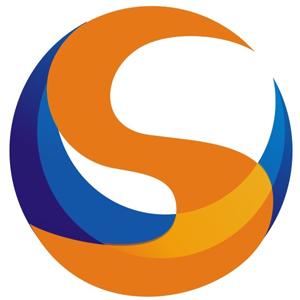Outline
- Introduction
- Impact of Middle Eastern Instability on Light Sensor Controller Export Demand
- Russia-Ukraine Conflict and Energy Transition Opportunities
- Potential Impact of Korean Peninsula Tensions on Regional Trade Activities
- Demand Fluctuations And Adjustments In Production and Inventory Strategies
- Measures to Ensure Raw Material Supply and Product Delivery Amidst Supply Chain Disruptions
- Maintaining Price Competitiveness Amid Increased Exchange Rate Risks
- Monitoring Government Policy Trends to Navigate Policy Uncertainty
- Market Potential of Light Sensor Controller
- Seizing Development Opportunities in Smart City Projects with Light Sensor Controller
- Technological Innovations Enhancing Smart Light Applications
- Exploring International Markets Through Regional Economic Cooperation Organizations
- Achieving Sustainable Development Amid Complex International Environments
- Final Words
The global light sensor controller market is deeply connected to world events. These systems, like trade wars, political tensions, and changing energy policies, all impact how companies make and sell these controllers.
Recent global instability has messed with the usual ways of doing business and created both dangers and new chances for the industry. At the same time, the world is increasingly focused on saving energy and building smart cities, which means there’s huge potential for light controllers in the global market.
This article will be a detailed analysis of how geopolitical turmoil affects light sensor exports and will give a comprehensive overview of market potential analysis.

Impact of Middle Eastern Instability on Light Sensor Controller Export Demand
Political instability in the Middle East disrupts infrastructure projects, leading to decreased demand for light sensor controllers. Supply chain disruptions from regional instability further impede the timely delivery of components, affecting manufacturers’ ability to meet demand.
Below is the table explaining how Middle Eastern instability has impacted the export of light sensors.
| Metric | Details |
| Pre-Conflict Growth Projection | The Middle East and Africa Smart Lighting Market was projected to grow at a CAGR of 19.4% by 2028. |
| Post-Conflict Growth Adjustment | Due to regional instability, the market is expected to grow at a CAGR of 4.21% from 2024 to 2030. |
| Market Size Reduction | The market size in 2024 is expected to be USD 3.08 billion, reaching USD 3.95 billion by 2030, indicating a slower growth trajectory. |
Additionally, economic sanctions and trade restrictions complicate export processes, increasing costs and reducing competitiveness. Fluctuating oil prices, influenced by regional tensions, impact government budgets, potentially reducing funding for smart infrastructure investments.
Amidst Middle Eastern instability, manufacturers should make strategies that ally with the changing regional apparatus. This can be the only way forward.
Russia-Ukraine Conflict and Energy Transition Opportunities
The ongoing Ukraine crisis has directly impacted Europe’s access to Russian energy. This energy deficiency lacuna is filled by light controllers, giving rise to their demand and opening up new opportunities for manufacturers.
However, the war has also disrupted global supply chains. This resulted in shortages of important parts and increased production costs. The table below shows how things unfolded after the conflict.
| Metric | Details |
| Pre-Conflict Growth Projection | The global Smart Lighting Market was expected to grow at a CAGR of 21.4% from 2024 to 2030. |
| Post-Conflict Growth Adjustment | Due to the Russia-Ukraine conflict, the market is now projected to grow at a CAGR of 14.44% over the forecast period 2024-2032. |
| Supply Chain Disruption Impact | The prolonged conflict has affected global trade, presenting challenges to the LED lighting market’s revenue growth. |
Thus, striking the right balance between meeting the demand and dealing with the challenges of a strained supply chain is key to companies’ success in navigating these waters.
Potential Impact of Korean Peninsula Tensions on Regional Trade Activities
Tensions on the Korean Peninsula can really mess things up for trade in the region. If things get too heated, there could be more security checks, making it harder to ship goods around Northeast Asia.
This can scare away investors, leading to less foreign investment and less cooperation between countries. Plus, if the relationship between North and South Korea is strained, it can really hurt trade between them.
Companies in such a trade should carefully monitor all political events that could shape the regional landscape and come up with plans to deal with any trade disruptions that might happen.
Demand Fluctuations And Adjustments In Production and Inventory Strategies
Manufacturers today employ digital instruments to better understand and respond to their supply chains. Companies now have advanced analytics and real-time tracking systems. This helps them in finding out estimated changes in demand and adjusting production schedules.
Additionally, they’re making their production processes more flexible to quickly adapt to changing production needs.
These strategies enable manufacturers to manage demand fluctuations without excess inventories and stock-outs. Consequently, all these will help optimize the overall operations and make customers happy.
Measures to Ensure Raw Material Supply and Product Delivery Amidst Supply Chain Disruptions
Supply chain problems are happening more often these days. To avoid getting stuck, companies need to take action.
First, they should work with multiple suppliers instead of relying on just one. This helps them avoid problems if something happens in a particular region.
Second, building strong relationships with key suppliers is important. This helps everyone work together better and makes the supply chain more reliable.
Finally, investing in technology that tracks inventory and monitors logistics in real time is crucial. This allows companies to quickly react to unexpected problems.
By taking these steps, companies can ensure a steady flow of materials and keep delivering products consistently, even when things get tough.

Maintaining Price Competitiveness Amid Increased Exchange Rate Risks
Forward contracts are instruments used by exporters to ensure they remain competitive during erratic currency fluctuations. By facilitating a good exchange rate for exporters, this kind of contract saves them from losses that may occur in future.
There are a handful of other companies that invoice customers in their currency and shift exchange rate risk to the buyer. Another method is to match income and expenses in the same foreign currency.
With these techniques, exporters can maintain price stability, maintain a steady profit, and compete with the rest of the world in case of unpredictable exchange rates.
Monitoring Government Policy Trends to Navigate Policy Uncertainty
For a business, keeping tabs on government policies is as good as holding the scythe over the hollowed wood. For example, the U.S. government has issued guidelines for buying energy-efficient lighting for federal buildings, which impacts the market for smart lighting.
Plus, government programs that encourage energy savings can boost demand for these technologies. Closely watching these policy changes can help companies adapt their strategies to comply with regulations, take advantage of incentives, and minimize the risks associated with changing policies.
Market Potential of Light Sensor Controllers
The global smart lighting market is expanding. Analysis depicts its reach to $18 billion by 2029, with an average growth rate of 13.5% each year. This growth is driven by government initiatives that encourage energy savings and the increasing popularity of smart home technologies.
Light sensor controllers are a key part of these systems, offering features like remote control and automated energy management. With energy conservation becoming a top priority worldwide, the demand for lighting solutions is only going to increase.
The table below explains the market potential of light sensor controllers.
| Region | Metric | Details |
| Global | Pre-Conflict Market Size (2024) | USD 4.67 billion |
| North America | Market Share (2023) | 38% of the global market |
| Europe | Projected Growth Rate (2024-2032) | 14.2% CAGR |
| Asia-Pacific | Pre-Conflict Growth Projection (2024) | CAGR of 16.3% |
| Adjusted Growth Post-Conflict | CAGR reduced to 12.8% due to geopolitical instability | |
| Middle East & Africa | Market Growth (2024-2030) | 4.21% CAGR due to political instability affecting demand |
| Russia-Ukraine Impact | Supply Chain Cost Increase | 20% rise in raw material prices, delaying project rollouts |
Seizing Development Opportunities in Smart City Projects with Light Sensor Controllers
Light sensors make street lighting more energy-efficient and adaptable. They let cities manage their streetlights centrally, saving energy and reducing maintenance costs. Plus, they can connect with other city systems, including traffic control and public safety, to enrich the overall infrastructure of the city.
By using this technology, cities can operate more efficiently and provide better services to their residents.
Manufacturers and service providers ought to work collaboratively with the cities. Solutions crafted specifically for the region can help them monetize the fast-growing smart city market.
Technological Innovations Enhancing Light Sensor Applications
The Internet of Things has made possible real-time programming of light sensor controllers for different user preferences and environmental conditions. Color and brightness can be customized, along with the time of switching on and off.
Machine-learning-enabled controllers are programmed to adjust luminance depending on how you usually use them. Such innovations, apart from making the lighting more user-friendly and colorful, open up new avenues for homes and businesses as well as factories.

Exploring International Markets Through Regional Economic Cooperation Organizations
Joining regional economic groups can help companies that make light controllers expand their business internationally. Such groupings usually enter into trade agreements that tend to lower tariffs and ease other regulatory hindrances when selling products in new markets.
They can also prove fruitful for collaborative research and development, which can add to innovation. Companies participating in such groups may learn the needs of regional markets, develop relationships with other firms, and generally make themselves much more competitive on the global stage.
Achieving Sustainable Development Amid Complex International Environments
To succeed long-term, light sensor manufacturers need to be flexible and adapt to the changing global market. This could be in terms of focusing on sustainability or designing energy-efficient products. Further, alignment with global environmental standards and what consumers are looking for can make the game easy.
It’s also important to diversify their supply chains and markets to avoid relying too heavily on any one region. This helps them deal with potential problems caused by political instability.
Final Words
The evolving geopolitical landscape and rapid technological advancements present both challenges and opportunities for light sensor controller manufacturers. By adapting to market trends, prioritizing innovation, and navigating supply chain complexities, businesses can ensure sustainable growth. For reliable, high-quality light sensor controllers that align with global standards, Chi-Swear offers trusted solutions tailored to diverse market needs.
External Links
- https://www.businessinsider.com/gazprom-shares-fall-lowest-price-15-years-eu-export-headache-2024-12
- https://news.usni.org/2024/11/25/korean-peninsula-facing-new-cold-war-says-security-panel
- https://www.iiot-world.com/smart-manufacturing/report-meeting-the-challenge-of-supply-chain-disruption/
- https://www.bdc.ca/en/articles-tools/marketing-sales-export/export/limit-foreign-exchange-risk?utm_source
- https://www.gsa.gov/about-us/newsroom/news-releases/gsa-provides-guidance-on-procuring-and-using-energyefficient-lighting-in-federal-buildings-02012024
- https://www.marketsandmarkets.com/Market-Reports/smart-lighting-market-985.html?utm_source
- https://www.reply.com/en/iot/smart-street-lighting-with-iot






